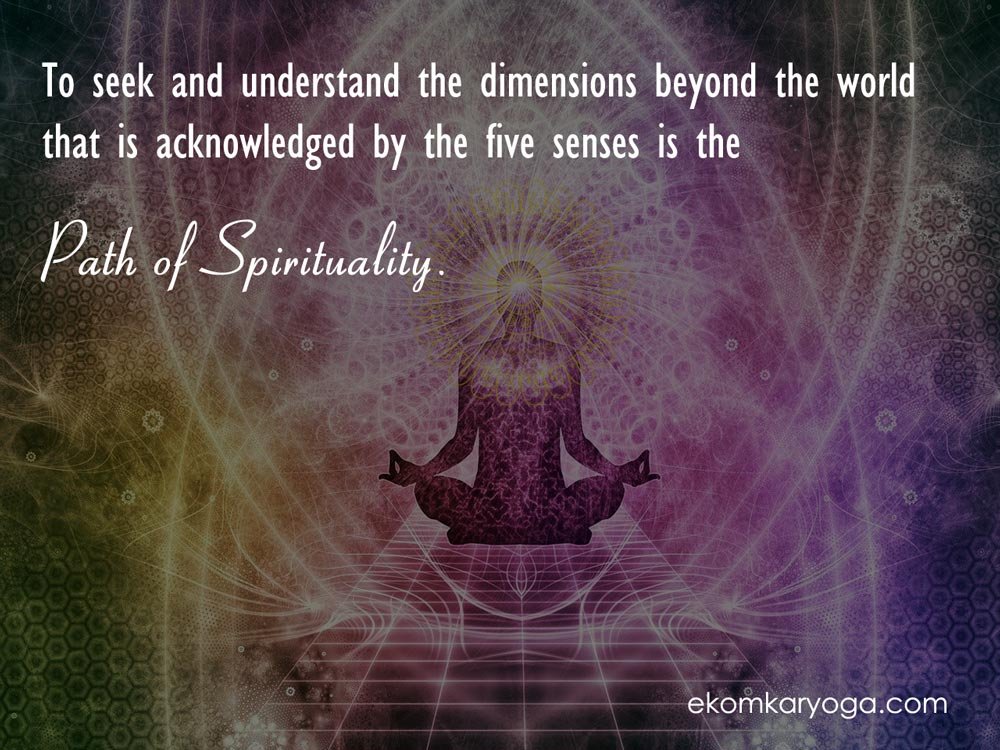SILENCE – A Spiritual Practice

 When we say silence as a spiritual practice there are a few things that must first be put in perspective before we go ahead in understanding what this means. Like studying a sutra, let us take the terms Spirituality and Silence and try to explore what the words mean independently and then examine their essence when combined.
When we say silence as a spiritual practice there are a few things that must first be put in perspective before we go ahead in understanding what this means. Like studying a sutra, let us take the terms Spirituality and Silence and try to explore what the words mean independently and then examine their essence when combined.
What is Spirituality?

Broadly, to seek and understand the dimensions beyond the world that is acknowledged by the five senses is the path of spirituality.
There have been many practices that have been followed by the ancients in realizing this path. Yoga is one of the spiritual paths where the search begins with first understanding the gross external manifested world (Prakruti) moving towards the self (Purusha) and then gradually transcending into subtler states of the consciousness (Samadhi) finally leading to liberation or enlightenment (Kaivalya). The Dharmic way of looking at existence and purpose, whatever be the engagement in one’s life is a path of spirituality, as in the end there is always the intention to end the cycle of birth and re-birth into the manifested world and find liberation.
Also Read: Understanding Yoga- An Introduction
Spirituality in Modern Context
With the institutionalization of many of the spiritual paths, spirituality, in the modern context has come to be used mostly to differentiate from the term Religious.
Those who do not wish to be seen as a follower of a certain religion but are aligned to the concept of a higher consciousness, existence of worlds apart from the physically manifested world, who believe in divine forces of creation and destruction and nature, who believe in seeking the truth about creation and purpose, and so on, have come to call themselves as Spiritual. To clarify this here Religion is very definitely understood as a part of the Spiritual process.
Patanjali in his Yoga sutra introduced the concept of Ishwara Pranidhana as one of the Niyama of the Ashtaanga practice. The path of Religion laid particular emphasis on the aspect of devotion and surrender (as indicated by Patanjali) as a means to realize the higher consciousness, as a means to liberation.
What is Silence?
The manifested universe comprises of five elements (Pancha Bhutas) corresponding to which there are five senses (Tanmatras) to which correspond five sense organs (Jnanendriyas).
| S. No. | Bhutas | Tanmatras | Jnanendriyas |
|---|---|---|---|
| 1 | Fire | Sight | Eyes |
| 2 | Air | Touch | Skin |
| 3 | Water | Taste | Tongue |
| 4 | Earth | Smell | Nose |
| 5 | Space/Ether | Hearing | Ears |
Silence in its gross application refers to refraining from this element of sound.
It starts from the external whatever is sensed by the Ear sense organ (Jnanendriya) and then moves on to the Chitta – starting from the mind (Manas) to the level of the consciousness.
In the practice of Yoga, Patanjali proposes the fifth limb of Ashtanga as Pratyahara which means the start of the withdrawal of the senses. After Pratyahara, there is a movement of the consciousness into the state of Ekagra or Dharana, which means into the state of concentration. Once the external noise has been effectively subdued, the Ear is no more the one that is bringing in the sound manifestation to the Chitta. The mind is the one that now brings in noise in the form of emotions and thoughts.
Silence is a practice of arriving at Nirodhah (restricting to cessation) of even the noise created at the mind level. In the finer states of consciousness wisdom and bliss (Vijnana and Ananda) also become Vrittis (noise in this context). There is always a residual noise until the realization of the Brahman or Kaivalya is attained.
On understanding these two terms it becomes evident that the practice of silence is a Spiritual practice.
Even so, let us try to examine further
“Naiva tasya krtenaartho naakrteneha kaschana”
Hold fast neither in doing something nor in not doing something
– Baghawad Gita(3/18).
The power which lies in not doing is not at all there in doing. The reason is that any doing has a beginning and an end. That which has a beginning and an end are not eternal. But the “non-doing” has neither a beginning nor an end; hence it is eternal. The Brahman lies in the non-doing.
When Silence is spoken as a spiritual practice, firstly, a conducive ambiance is chosen so that energy need not be spent on handling the external sounds. The Rishis and Yogis chose to retreat in forests thus isolating themselves from this external noise. It also meant that there would not be much communication with the outside world in the form of speech. Whenever one is in an ambiance of Yoga practice, oral communication can be kept to the bare necessities so that there is an automatic movement of the consciousness inwards. Once this is done, then there are various methods of Asana and Pranayama and Meditation practices that help to reduce the subtler noises.
Apart from the spiritual seekers, even for a being who is involved in the modern rush of life which involves excessive communication, a short practice of Silence Retreat could help in channelizing and balancing energies (Prana) and balancing the emotions and thoughts and improve concentration arriving towards the realization of many kinds.
Om Tat Sat Author: Yoga Sadhaka Narendhran
Author: Yoga Sadhaka Narendhran